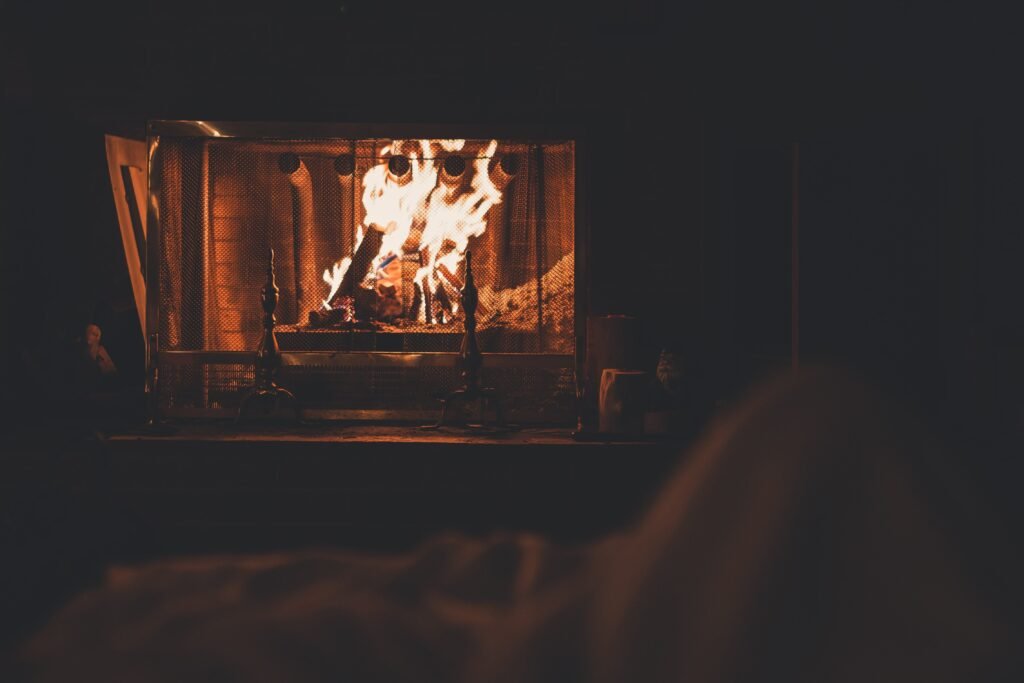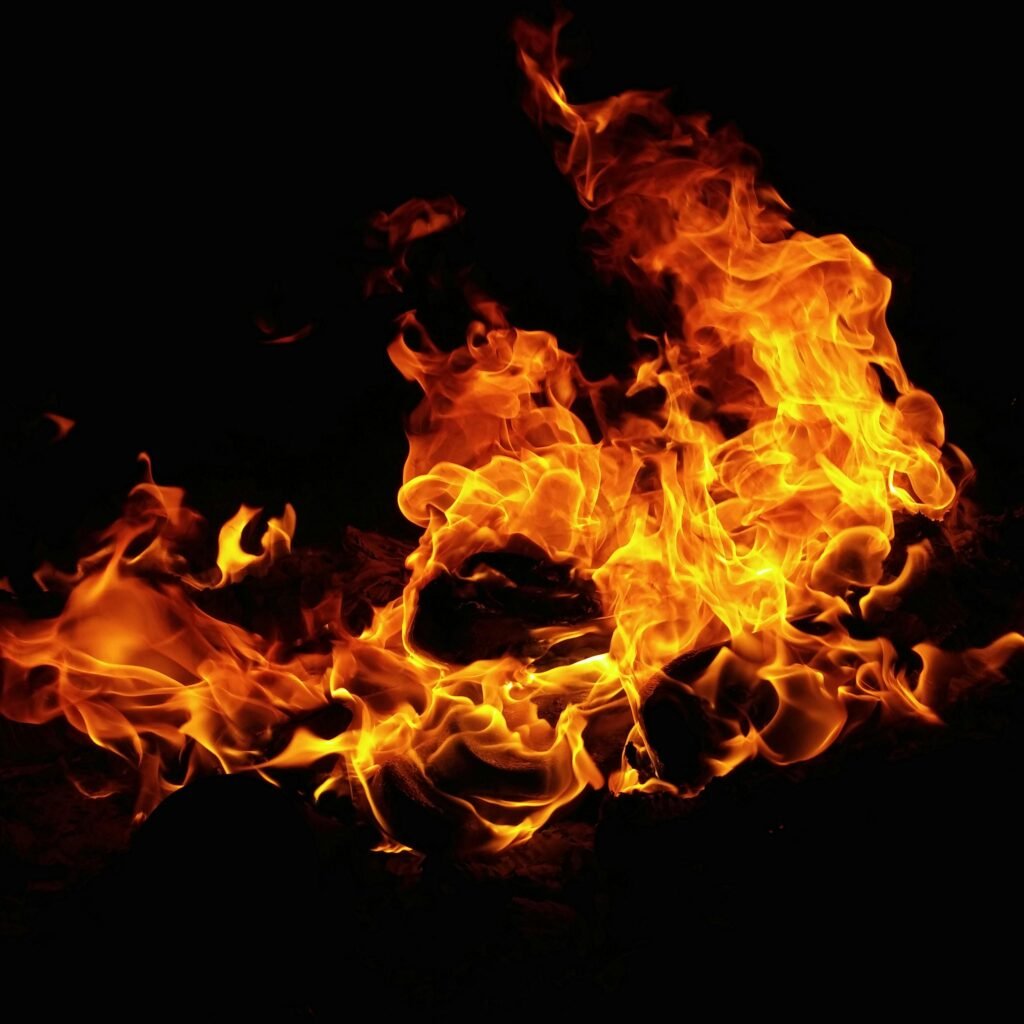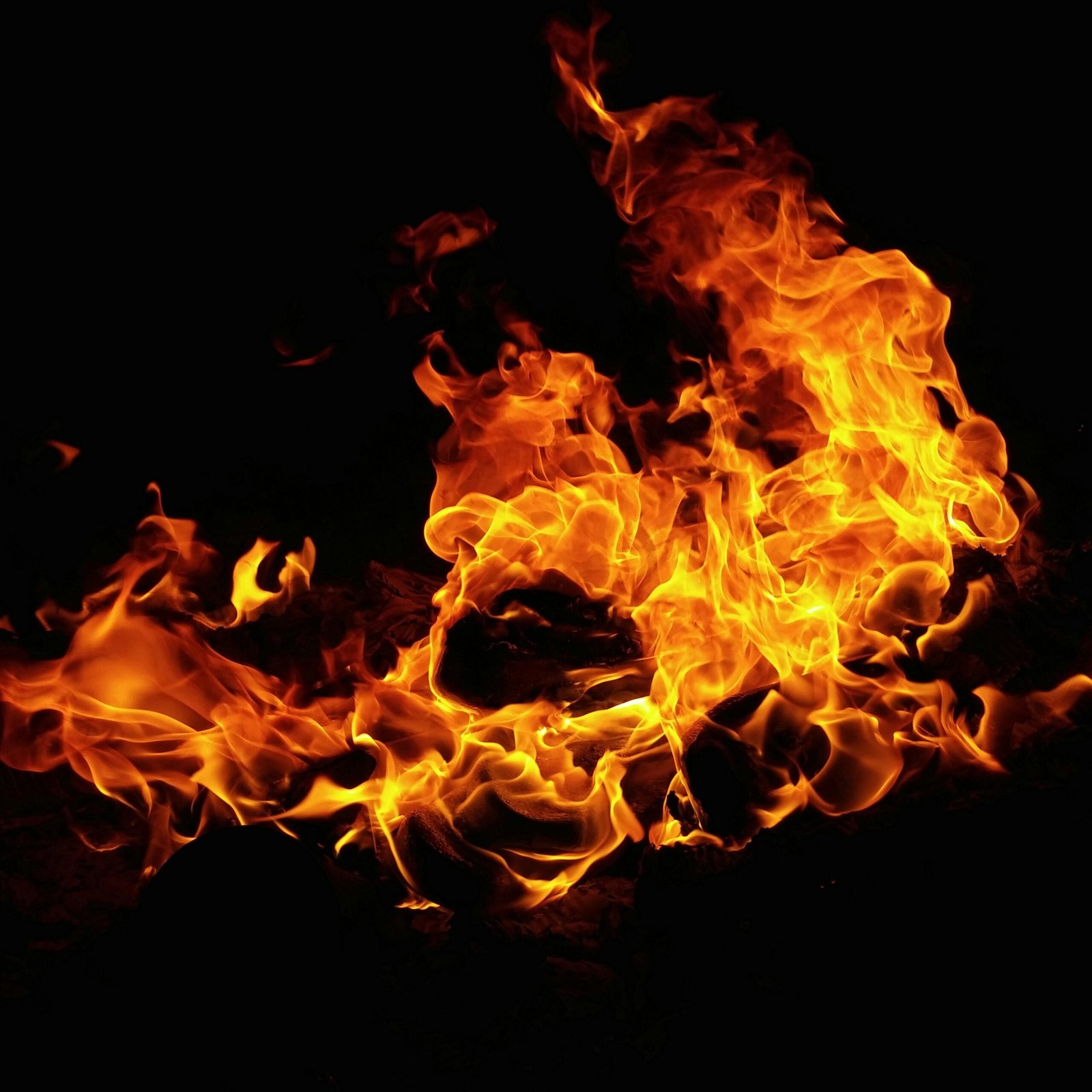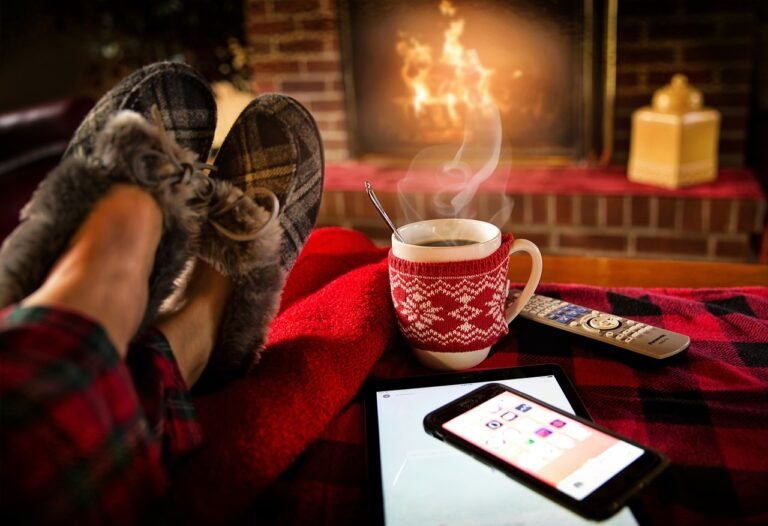As the chill of winter sets in, there’s nothing quite like cozying up next to a warm and crackling fireplace heater. To ensure that your winter nights stay toasty and free from any unexpected glitches, it’s important to give your fireplace heater some TLC. In this article, we’ll share essential tips and tricks for fireplace heater maintenance, so you can enjoy a cozy winter without any worries. From cleaning and inspecting to troubleshooting common issues, we’ve got you covered. So grab a cup of hot cocoa, settle down, and let’s dive into Fireplace Heater Maintenance 101!
Regular Cleaning
Remove Ash and Debris
Regular cleaning is essential for maintaining the efficiency and safety of your fireplace heater. One of the first tasks you should tackle is removing ash and debris. After each use, allow the ashes to cool completely and then use a fireplace shovel or brush to scoop them out of the firebox. Dispose of the ashes in a metal container and make sure they are completely extinguished before disposing of them outside.
Clean the Chimney and Flue
Another important aspect of regular cleaning is cleaning the chimney and flue. Over time, soot and creosote can build up inside the chimney, posing a fire hazard. To clean the chimney, you can use a chimney brush, extension rod, and vacuum cleaner. Insert the chimney brush into the chimney and scrub vigorously to dislodge any debris. Use the extension rod to reach higher areas, and then use a vacuum cleaner to remove the loosened debris.
Dust and Vacuum the Surrounding Area
In addition to cleaning the interior components of your fireplace heater, it’s also crucial to keep the surrounding area clean. Dust and vacuum the area around the fireplace regularly to prevent the accumulation of dirt, dust, and debris. This not only enhances the aesthetic appeal of your fireplace but also prevents the buildup of flammable materials that could potentially ignite.
Inspecting and Replacing Parts
Check the Firebox
Inspecting the firebox is an important step in ensuring the safety and functionality of your fireplace heater. Look for any signs of cracks, loose bricks, or deteriorating mortar. If any damage is detected, it’s crucial to address it promptly to prevent further deterioration.
Inspect the Damper
The damper is responsible for controlling the airflow into the fireplace. Make sure the damper is opening and closing properly. Check for any signs of rust, damage, or blockages. If the damper is not functioning correctly, it may affect the efficiency and safety of your fireplace heater.
Replace Worn-out Gaskets
Gaskets form a seal between the different components of your fireplace heater. Over time, these gaskets can wear out or become damaged. Inspect the gaskets and replace any that are worn or showing signs of deterioration. This helps ensure that there are no gaps or leaks that could compromise the performance of your fireplace.
Test and Replace Batteries
Many fireplace heaters are equipped with electronic components, such as thermostats or remote controls, that require batteries. Regularly check the batteries in these devices and replace them as needed. This ensures that your fireplace heater functions properly and allows you to control it conveniently.

This image is property of images.pexels.com.
Maintaining the Pilot Light
Clean and Adjust the Pilot Light
The pilot light is responsible for igniting the fuel in your fireplace. Over time, dust and debris can accumulate around the pilot light, affecting its performance. Regularly clean the pilot light and its surroundings using a soft brush or compressed air. Additionally, check the pilot light’s flame pattern to ensure it is steady and evenly distributed.
Check for Proper Flame Appearance
A properly functioning pilot light should produce a steady flame with a blue color. If the flame is flickering, yellow, or irregular in shape, it may indicate an issue with the pilot light or the fuel mixture. If you notice any abnormalities in the flame appearance, it’s important to troubleshoot the problem or seek professional assistance.
Inspect and Clean the Thermocouple
The thermocouple is a safety device that detects the presence of a flame. Regularly inspect the thermocouple for any signs of dirt, corrosion, or damage. Gently clean it using a cloth or brush to ensure optimal performance. A malfunctioning or dirty thermocouple can cause the pilot light to go out unexpectedly, leading to a loss of heat.
Replace Faulty Pilot Light Components
If you experience ongoing issues with your pilot light, such as difficulty in ignition or frequent flame outs, it may be necessary to replace faulty components. Consult the manufacturer’s instructions or contact a fireplace technician to ensure accurate diagnosis and proper replacement.
Monitoring Carbon Monoxide
Install and Test Carbon Monoxide Detectors
Carbon monoxide is a colorless and odorless gas that can be produced by your fireplace heater. To ensure the safety of your home and family, it’s crucial to install carbon monoxide detectors in the vicinity of your fireplace and in other areas of your home as recommended by experts. Regularly test these detectors to ensure they are functioning correctly and replace the batteries as needed.
Ensure Proper Ventilation
Proper ventilation is essential for the safe operation of your fireplace heater. Make sure that air vents in the room are not blocked by furniture or other objects. Adequate airflow allows for efficient combustion and helps prevent the buildup of carbon monoxide gas.
Never Leave the Fireplace Unattended
One of the simplest yet most important safety tips is to never leave your fireplace unattended. Always ensure that someone is present in the room while the fireplace is in use. Accidents can happen in an instant, so it’s crucial to exercise caution and be responsible when enjoying the warmth and coziness of your fireplace.

This image is property of images.pexels.com.
Preventing Creosote Buildup
Burn Seasoned Hardwood
To minimize creosote buildup in your chimney, it’s essential to burn seasoned hardwood. Seasoned wood has been properly dried, reducing the moisture content and decreasing the amount of creosote that forms during combustion. Avoid burning green or wet wood, as it produces more creosote and can lead to increased chimney maintenance.
Avoid Smoldering Fires
Fires that smolder for prolonged periods can contribute to excessive creosote buildup. Ensure proper airflow by using kindling and properly dried firewood to encourage a hot and clean-burning fire. Avoid loading the fireplace with excessive amounts of wood or reducing the air supply, as this can result in smoldering fires and increased creosote production.
Have Annual Chimney Inspections
Regular chimney inspections are crucial for preventing creosote buildup and maintaining the safety of your fireplace heater. Schedule an annual inspection with a certified chimney sweep who can thoroughly assess your chimney for any signs of creosote or other issues. Prompt removal of creosote and addressing any necessary repairs can prevent potential chimney fires.
Schedule Professional Chimney Sweeping
Professional chimney sweeping is a vital part of fireplace maintenance. A certified chimney sweep has the expertise and specialized tools to effectively remove creosote and other debris from your chimney. It is recommended to have your chimney professionally swept at least once a year, or more frequently if you use your fireplace heater extensively.
Maintaining Firewood
Store Firewood Properly
Properly storing firewood is crucial for maintaining its quality and preventing moisture buildup. Store your firewood in a dry and well-ventilated area, such as a woodshed or covered rack. Elevate the firewood off the ground using pallets or a raised platform to prevent contact with moisture or pests.
Keep Firewood Dry and Covered
To ensure that your firewood remains dry, cover it with a tarp or waterproof cover. This protects the wood from rain, snow, and other sources of moisture. Remember to leave the sides of the stack uncovered to allow for proper airflow and drying.
Avoid Storing Firewood Indoors
Storing firewood indoors may seem convenient, but it can introduce pests and moisture into your home. Insects, including termites and ants, can easily infest the wood and potentially spread to other areas of your house. It’s best to store firewood outside and bring in only what you need for immediate use.

This image is property of images.pexels.com.
Using Heat-resistant Glass
Clean the Glass Regularly
If your fireplace heater is equipped with heat-resistant glass, it’s important to keep it clean for optimal performance and visual appeal. Regularly clean the glass using a glass cleaner specifically formulated for use on fireplace glass. Avoid abrasive cleaners or tools that can scratch the glass.
Replace Cracked or Damaged Glass
Any cracks or damage to the heat-resistant glass should be addressed promptly. Cracks can compromise the integrity and safety of the glass and may lead to heat loss. Consult a fireplace technician or the manufacturer for replacement options if you notice any damage to the glass.
Install Safety Screens or Doors
Installing safety screens or doors can provide an extra layer of protection and help prevent accidental contact with the hot glass surface. Safety screens also act as a barrier, preventing debris from entering the fireplace and potentially causing damage.
Adjusting and Calibrating Thermostat
Check for Accuracy and Consistency
A properly functioning thermostat is essential for maintaining a comfortable temperature in your home and ensuring efficient use of your fireplace heater. Regularly check the accuracy and consistency of your thermostat by comparing its readings with a separate thermometer. If there are significant discrepancies, consider recalibrating or replacing the thermostat.
Adjust Thermostat Settings for Efficiency
To maximize energy efficiency, adjust your thermostat settings based on your specific heating needs. Lowering the temperature slightly or using a programmable thermostat to regulate temperature fluctuations can help reduce energy waste and lower heating costs.
Calibrate the Thermostat If Necessary
If you suspect that your thermostat is not accurately reflecting the temperature in your home or if it’s not consistently responding to adjustments, it may require calibration. Refer to the manufacturer’s instructions or consult a professional technician to learn how to calibrate your specific thermostat model.
Consider Using a Programmable Thermostat
A programmable thermostat offers increased convenience and energy savings. With a programmable thermostat, you can set temperature schedules to automatically adjust throughout the day, ensuring optimal comfort and energy efficiency. This allows you to enjoy the cozy warmth of your fireplace heater while minimizing energy waste.
Maintaining Proper Air Flow
Clear Obstructions Around the Fireplace
To maintain proper air flow in your fireplace, it’s important to keep the surrounding area clear of any obstructions. Avoid placing furniture, decorations, or other objects too close to the fireplace, as they can impede air circulation and affect the overall performance of your fireplace heater.
Inspect and Clean Air Vents
Regularly inspect and clean the air vents of your fireplace to ensure proper airflow. Dust, debris, and even small animals can block the vents, hindering the combustion process and reducing the efficiency of your fireplace heater. Use a soft brush or compressed air to remove any obstructions from the vents.
Use a Fireplace Blower or Fan
For enhanced airflow and heat distribution, consider using a fireplace blower or fan. These devices help circulate the warm air generated by your fireplace throughout the room, increasing comfort and efficiency. Follow the manufacturer’s instructions on installation and operation to ensure optimum performance.
Consider Installing a Heat Circulation System
If you have multiple rooms or levels in your home, a heat circulation system can be beneficial. This system redistributes the warm air generated by your fireplace heater to other areas of your home using ducts or fans. A fireplace technician can help you determine the most suitable heat circulation system for your specific needs.
Seeking Professional Help
Engage a Certified Chimney Sweep
To ensure the safety and longevity of your fireplace heater, it’s recommended to engage a certified chimney sweep for regular inspections and cleanings. A professional chimney sweep possesses the knowledge, experience, and specialized tools to thoroughly assess your fireplace and chimney, identifying any potential issues and ensuring optimal performance.
Consult a Fireplace Technician
If you encounter any technical issues or notice any abnormal operation of your fireplace heater, it’s advisable to consult a fireplace technician. They have the expertise to diagnose and troubleshoot various fireplace-related problems, allowing for timely repairs and avoiding further damage.
Contact Manufacturer for Repairs
If your fireplace heater is still under warranty, contacting the manufacturer for repairs is often the best course of action. The manufacturer can provide guidance on troubleshooting steps, recommend authorized service providers, or arrange for warranty repairs if necessary.
Schedule Regular Maintenance
In addition to professional inspections and cleanings, scheduling regular maintenance for your fireplace heater is crucial. Following the manufacturer’s recommended maintenance schedule ensures that your fireplace operates efficiently and safely. Regular maintenance can also help identify and address minor issues before they escalate into significant problems.
Maintaining a cozy and efficient fireplace heater requires regular cleaning, inspections, and proper usage. By following these tips and tricks for fireplace maintenance, you’ll ensure a warm and enjoyable experience while keeping your home safe. Remember to consult professionals when needed and take the necessary steps to prevent potential hazards. Stay warm and cozy all winter long with a well-maintained fireplace heater!




